Evolution of MF/HF/VHF GMDSS Testers
The MF/HF/VHF radio stations with DSC (Digital Selective Calling) are an essential component of modern communication systems operating within the GMDSS.
DSC is used for initial calling of ship and shore stations for the purpose of further communication by radiotelephone or radiotelex. This system involves the transmission of short formalized messages, represented in encoded form using binary characters in the MF, HF and VHF bands.
As an integral part of the GMDSS, the DSC system is used for:
- disaster alerts, distress call confirmation, and distress call relay;
- notification of vessels about the upcoming transmission of urgent messages, vital navigational warnings;
- establishing a service connection on the working channel.
GMDSS radio stations must be connected to a satellite navigation receiver (GPS), which ensures the accuracy of the ship’s location data sent to the rescue coordination centre in the event of a distress call.
They are represented by the following types of ship radio equipment:
-
MF/HF radio telephone equipment;
-
MF/HF DSC controllers;
-
MF/HF receivers with the DSC;
-
VHF receiver-transmitters;
-
VHF receiver-transmitters with DSC;
-
VHF duplex radiotelephony equipment.
The International Maritime Organization (IMO) requires all GMDSS equipment be regularly tested and maintained. Therefore, the inspection of the MF/HF/VHF radio stations is mandatory.
Each type of such equipment must meet the requirements of SOLAS, as well as the relevant technical demands and standards. They are developed by recognized international organizations such as IMO, ITU-R.
The most prominent of these documents are:
- IMO Resolution A.605(15): Performance standards for survival craft two-way VHF radiotelephone apparatus adopted on 19 November 1987;
- IMO Resolution A.803(19): Performance standards for shipborne VHF radio installations capable of voice communication and digital selective calling adopted on 23 November 1995;
- IMO Resolution A.694(17): General Requirements for Shipborne Radio Equipment Forming Part of the Global Maritime Distress and Safety System (GMDSS) and for Electronic Navigational Aids adopted on 6 November 1991;
- IMO Resolutions A.804(19) and MSC.68(68): Performance Standards for Shipborne MF Radio Installations Capable of Voice Communications and Digital Selective Calling adopted on 23 November 1995;
- IMO Resolutions A.806(19) and MSC.68(68): Performance Standards for Shipborne MF/HF Radio Installations Capable of Voice Communication, Narrow-Band Direct-Printing and Digital Selective Calling adopted on 23 November 1995, etc.
Based on these requirements, the minimum test volume required to check the performance of MF/HF/VHF GMDSS radios is as follows:
- performing operational tests on emergency channels;
- measuring the frequency and its deviation;
- measuring the output/reflected power levels;
- generating and receiving DSC messages of different types to test transmission/reception of DSC messages;
- decoding DSC message to check its content including MMSI Code programmed in equipment.
Later the requirements for measuring the antenna VSWR were added to the list.
To perform all the necessary tests required by IMO, the radio surveyor will need to use a set of the following equipment:
-
frequency meter
-
power meter
-
deviation meter
-
SWR Meter
-
spectrum analyzer
-
oscilloscope, etc.
Delivery of all this equipment on board for radio survey does not seem to be the easiest solution. Besides, there is another task - to send/receive DSC message without broadcasting it to avoid false emergencies.
All these circumstances created the market for convenient tool performing all necessary tests to check the operation of the GMDSS radio equipment.
MF/HF/VHF GMDSS testers models review
This type of testers is represented by equipment from Ukrainian manufacturers.
1999 - Device for express diagnostics and control of ship's GMDSS equipment (MF/HF/VHF tester)
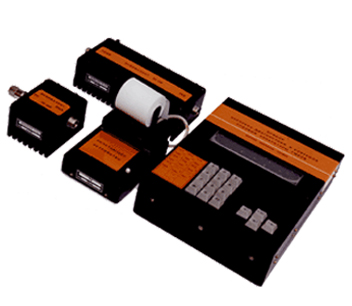
- Manufacturer (country): Musson-Morsvyaz (Ukraine)
- Testing scope: MF/HF/VHF radio stations with DSC
- Dimensions: device 270х215х65 mm, 3,6 kg; 50Ohm attenuator 242х110х60 mm, 1,6 kg; printer 145х105х60 mm, 0,9 kg
- Frequency meter: no
- Power level meter: yes
- SWR meter: no
- DSC support: yes, DISTRESS-1, DISTRESS-5, SAFETY
- Voice transmission: no
- Available for purchase: no
This device was the first standalone tester designed to check the transmission/reception of DSC messages of different types by GMDSS radio stations. The connection was established by cable, which allowed to send the DISTRESS messages directly to the tester, avoiding false signal emission to broadcast.
The tester was able to display the received DSC message and had a sound confirmation of this message.
It also had the ability to measure the output power level and to display it on a built-in LCD.
Another feature of the device was the ability to check the synchronized bit quantity, coming before DSC message to check the transmitting path.
The tester had a desktop form factor and was quite heavy. It had a special printer that allowed to print test results. The device could not be connected to PC.
2002 - Device for express diagnostics and control of VHF radio stations (VHF tester)
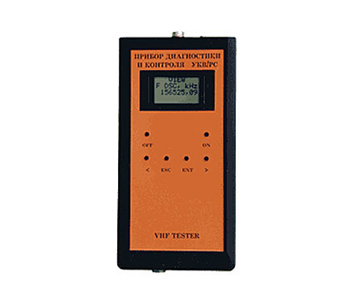
- Manufacturer (country): Musson-Morsvyaz (Ukraine)
- Testing scope: VHF radio stations with DSC
- Dimensions: device 200х100х45 mm, 0,65 kg; printer 145х105х60 mm
- Frequency meter: yes
- Power level meter: yes
- SWR meter: no
- DSC support: yes, DISTRESS-1, DISTRESS-5, INDIVIDUAL CALL
- Voice transmission: yes
- Available for purchase: no
The next generation device, the VHF tester, was designed to test VHF radio stations with DSC and portable VHF radios.
The tester only supported VHF radio, but had more features compared to the previous device.
In addition to all DSC tests, it allowed to measure frequency and its deviation in the range of 156-162 MHz.
It was also able of performing operation tests on emergency channels by transmission/reception of FM-modulated voice messages and allowed to estimate the radio's receiver sensitivity.
The measurements could be performed by direct connection or by antenna.
The tester became compact and hand-held. It had a larger LCD and a built-in rechargeable battery, allowed to save up to 10 last measurements in non-volatile memory.
The tester could be connected to PC to download the measurement results.
2007 - MRTS-7 (MF/HF/VHF DSC Marine Radio Test System)
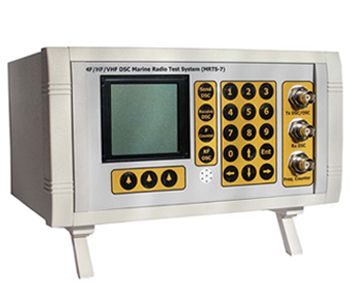
- Manufacturer (country): Musson-Marine (Ukraine)
- Testing scope: MF/HF/VHF DSC radio stations, Navtex
- Dimensions: 230x130x190 mm, 2,5 kg
- Frequency meter: yes
- Power level meter: yes
- SWR meter: no
- DSC support: yes, 6 types of messages
- Voice transmission: yes
- Available for purchase: no
The third generation of the GMDSS radio testers is represented by the MRTS-7 of the Musson Marine company (a subsidiary of Aeromarine SRT now).
Its functionality was extended compared to the VHF tester of Musson-Morsvyaz and checking for MF/HF radio was added.
MRTS-7 allowed to perform almost all tests required by IMO (DSC transmission/reception by direct connection or antenna, modulated voice messages for operation tests on emergency channels, frequency and its deviation measurement, reflected/output power level estimation, etc).
Other improvements introduced by the manufacturer included easy navigation, user-friendly menu, large LCD display, which allowed to decode the DSC message content on the fly.
The device was capable to test NAVTEX by sending several types of messages. It also could be used as a HF oscillator (generated a common signal in the range of 0.5-200 MHz) and as a frequency meter in the range of 0.1-640 MHz.
The tester could be connected to a PC and generated test reports using the appropriate software.
MRTS-7 had a desktop form factor and no built-in battery, making it inconvenient for field testing.
Conclusion
All MF/HF/VHF GMDSS testers were manufactured by Ukrainian companies. Testers that looked so different and had different form factors were very similar in their capabilities.
Some time later it became apparent that it was relatively easy to combine the GMDSS radio test functions with AIS stations testing in production. This path was initially chosen by the Danish company Danphone, which released the first “all-in-one” tester.
Gradually the highly specialized devices for radio testing (MF/HF/VHF GMDSS testers) were displaced from the market by multi-testers. Radio surveyors chose them as the preferred solution.
As for the specialized testers for other types of GMDSS equipment (beacon testers, SART testers) and also AIS stations (AIS testers), they are still on the market and still in demand.
By Olga Davydova
***
This article is one in a series of GMDSS testers history research. Welcome to the full edition:
Intro: Evolution of testers for GMDSS radio equipment
Part 1. Evolution of EPIRB testers
Part 2. Evolution of GMDSS MF/HF/VHF testers
Part 3. Evolution of SART testers
Part 4. Evolution of AIS testers
Part 5. Evolution of GMDSS multi testers
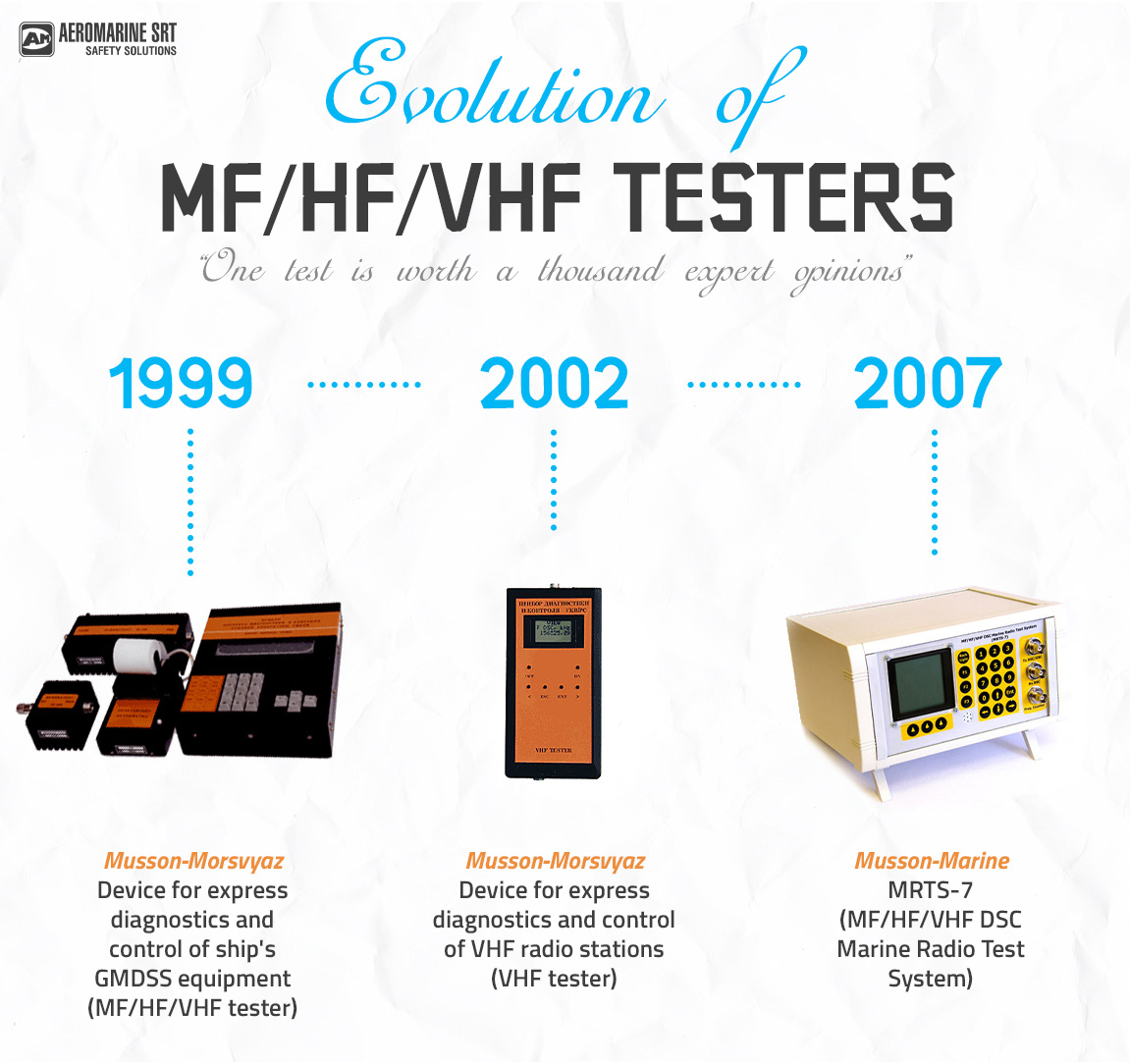

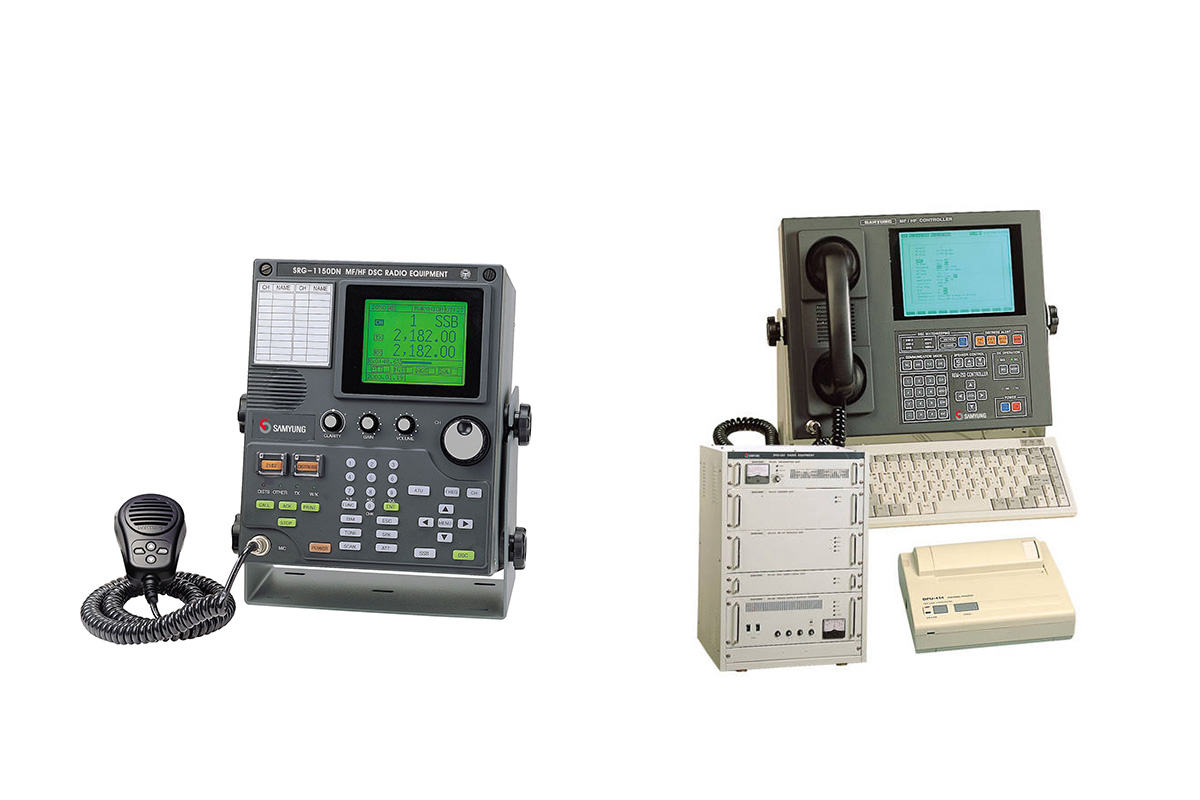
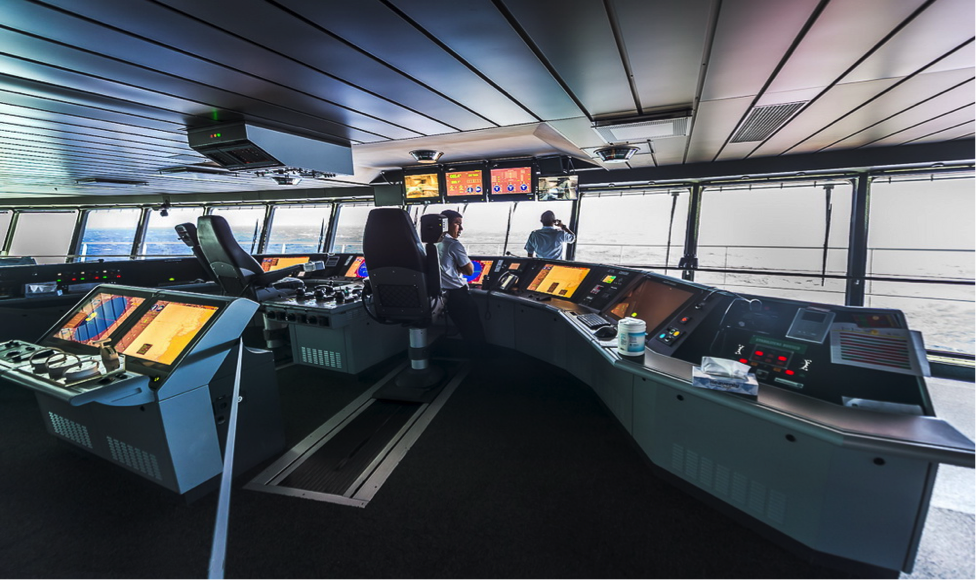


Be the first to comment